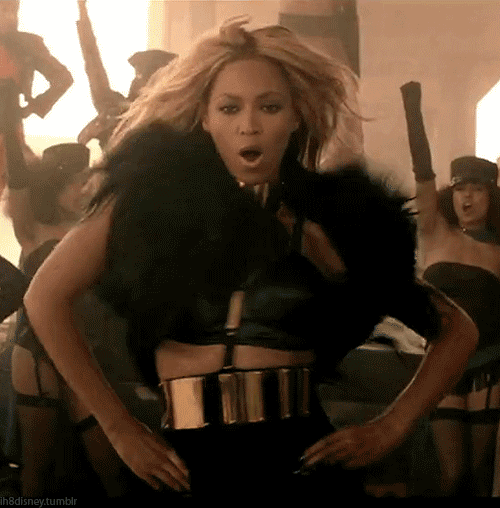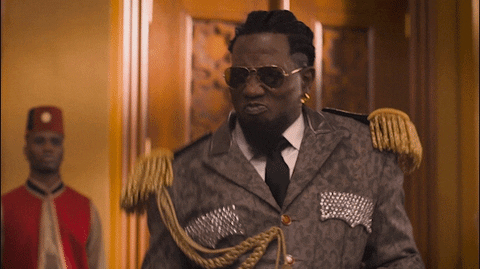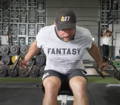How To Train with Shoulder Pain
How To Train With Shoulder Pain
Shoulder pain comes in a variety of forms. People might have shoulder pain when doing an external rotation and they travel through the midrange of the movement; one of the key areas where people have a consistent feel for shoulder pain and shoulder discomfort. Another consistent type of shoulder pain may occur when performing a snatch. When catching the snatch, people may experience shoulder pain and discomfort just on top of their shoulders. The third form of shoulder pain can come from an impact injury while playing sports like football or wrestling. An impact injury means people need to take off from presses immediately. Another consistent issue around shoulder pain, injuries, and discomfort comes from overuse. Think of baseball players and swimmers. There is a lot of chronic use.
The shoulder joint is very complex. It is one of the craziest joints on the body. The shoulder, along with the hip, is almost as complicated as joints get in the body. With that concept in mind, we want to give you, dear reader, a multiple-step plan to understand the different types of pain to see where you fall and figure out if you can train with shoulder pain.

1. Avoid Overhead Movements
I love the PA Press. It is one of my favorite overhead presses. But if you have shoulder pain, you should be avoiding the PA Press. You should be avoiding anything that goes overhead. Pull-ups, Z presses, dumbbell military presses, jerks, push presses, and anything else that goes overhead needs to be avoided immediately. That goes for snatches too, especially if there is pain on top of the shoulder.

Avoiding overhead movements will alleviate tension in the shoulder. Ideally, it will provide time for the shoulder to heal up as well.
2. Switch To Neutral Grip Pressing
The second step is to switch to neutral grip pressing or semi-neutral grip pressing. I like to use a football bar that is semi-neutral with a fat grip. That fat grip forces the shoulders to recruit a bit more and pack the shoulder blades back, activating the rhomboids to provide better support. Being in the neutral position is shoulder safe as well.
I recommend when pressing with dumbbells to use a neutral grip. You can even add a band around the wrists to light up that upper back when pressing with dumbbells. The band around the wrists makes the movement more challenging; it also forces the body to recruit the traps and rhomboids more. It also helps alleviate shoulder pain and lights up the triceps at the same time.

3. Pec Mobility, Rows, And Rhomboids
Improving shoulder stability and shoulder health means performing mobility work for the pecs. A great way to work on pec mobility is to superset a scorpion stretch with some type of neutral grip row. Try to lengthen the pec while performing the scorpion mobility stretch. The idea is to lengthen the pec while strengthening the back to help get rid of shoulder pain.
Part of the third step, namely doing a row like a dumbbell chest row on an incline with a neutral grip, is great. I recommend pushing the load doing the dumbbell chest row as long as it doesn’t hurt the shoulders. I also highly recommend doing drop sets of 20 to 25 reps to strengthen the rhomboids and the lats.
With that said, I typically like to get rid of all types of rows that have the palms down. But if I am using a machine, like a face pull or a seated row, I don’t mind going palms down as long as it doesn’t hurt the athlete. The reason being is that the machine is more stable. Doing a slow eccentric on the way back is always a great call too, especially if you are trying to get thick and swole.

Sticking with the rows, the T-bar row is great too. Especially a T-bar row with a semi-neutral grip. It is a great exercise to strengthen the lats, rhomboids, and biceps even. A lot of people forget that bicep strength leads to shoulder health and shoulder stability. The T-bar row is great for improving the shoulder girdle.
One reason bodybuilders don’t struggle with shoulder pain nearly as much as other athletes are because bodybuilders are very structurally sound. Bodybuilders do a lot of rowing and a lot of pressing. Many young athletes just want to bench press all the time and forget key-pulling exercises.
A favorite way of mine to eliminate shoulder pain is having athletes do rhomboid flies. A lot of people struggle to do a dead hang pull-up or severely internally rotate their shoulder when pressing. That’s an indication that the rhomboids aren’t firing. To do rhomboid flies, we want the palms facing forward. The chest comes down to the quads while seated. We then pull the dumbbells back, hugging the spine. We want to do massive sets of 25 to 30 reps to light up the rhomboids, strengthen the shoulder girdle, and ideally alleviate shoulder pain.

4. Incline Curl Foreshadowing
Some shoulder issues can be seen when a person is doing an incline curl. The person will have a little bit of pain in their pec or shoulder. The person typically doesn’t have the pain, but when doing the incline curls they have the pain. The incline curl pain is foreshadowing a potential injury later on in the shoulder joint. Incline curls are a great way to have a premonition of the health of someone’s shoulder area (and to get really big biceps).
5. Improve Thoracic Extension
The cylinder pictured below is a prototype. It isn’t for sale yet. But we like to use the cylinder pictured to improve thoracic extension.

The idea of using the implement is to put it on the ground, put the wheel on the thoracic spine, and then grab the cylinder with your hands. The goal is to extend and get the elbows to the floor. The idea is to reach toward the turf to open everything up. The stretch and thoracic mobility improvements are legit. It helps lengthen the lats and open up the pecs while improving thoracic extension. All of that should improve shoulder stability.

6. Slow Eccentric Tendinopathy
Slow eccentric tendinopathy is a fancy way of saying to pick specific exercises and work a 5 to 10-second eccentric movement to help alleviate pain and strengthen the targeted area. I recommend starting with Y’s on an incline for 6 to 10 reps with the deliberate eccentric. Depending on comfort and health, change the grip so the pinkies are pointing up to target the rear delts and through the middle of the spine.
One of my favorite slow eccentric exercises is a dumbbell external rotation. We forget that we can put on a heavier load because the shoulder is a very fast twitch. The controlled slow eccentric through the dumbbell external rotation does wonders for shoulder health.
There is also the PowerLastic band. I love to do banded pull-aparts and standing external rotations with the PowerLastic band. Again, the focus is on maintaining control through a slow and deliberate eccentric.
7. Don’t Stop Doing Leg Exercises
I can’t repeat this enough. Don’t stop doing leg exercises because of shoulder pain. Discomfort holding a front squat or back squat? The safety squat bar does wonders.
Recap
Avoid overhead movements. Know the injury. Follow the procedure and figure out the issue (don’t stop training cold turkey!!!). And maybe most importantly, when all else fails, find a trusted medical professional.
An issue with all of these exercises is that they can exacerbate injuries. Which highlights the need to find a medical practitioner. In our case at Garage Strength, we have the Mobility Doc in our corner. Our Mobility Doc helps our athletes minimize friction inside of joints. Minimizing friction can enhance impulse. Impulse is force over time. Better impulse helps us be stronger and improve in our sport.
That said, any amount of shoulder pain can’t be cured with more rows and presses when there is a tear in the muscles or ligaments. Sometimes, athletes just need to get surgery to fix the problem because there is a deeper issue. Proper imaging goes a long way in healing.
Related Posts
Blog Topics

Yo, It's Dane
Welcome to the Garage Strength Blog, where it is my goal to provide you with the experience and knowledge I've gained in the strength and conditioning world over many years of learning from both successes and failures. I train elite-level athletes in a multitude of sports from the high school to professional levels, already producing 5 Olympics and 30+ National Champions. If you want to be the next champion I train, check out my strength programs below!
Start Training With Me

Join for free educational videos EVERY WEEK on strength coaching and athletic performance



